Climate-related disclosures are becoming an essential, and expected, element of corporate disclosures; several signs point to this becoming mandatory. Typically, it is a multiyear task, involving a corporation starting small, and then adding elements over time.
By Tim Chicoine, Director of Sales, Americas – WedgeRock Engineered Solutions, & Gobind Khiani – Consulting Fellow-Piping/Pipelines
How ESG is Changing Corporations
Investors, communities, and stakeholders are pressuring companies of all sizes to act on the environmental and social aspects of performance. Focusing on environmental, social, and governance (ESG) efforts could be a differentiator when it comes to securing new contracts or customers for oilfield services.
The recent surge of focus on ESG matters by investors and other affected stakeholders has only been intensified by current public health, economic, and societal crises.
Essentially, ESG is meant to be a way by which companies can be assessed or ranked concerning a wide variety of factors, that measure the non-financial, and social impacts, of their investments and operations. At the same time, ESG is meant to provide a range of business and investment opportunities.
Some of the ESG target highlights that can shape the industry are:
- New targets to reduce methane and GHG emissions intensity from its operations by 30-50%, by 2030, and going forward net zero by 2050.
- Advancing the commitment towards new technology along with diversity, equity, and inclusion.
- Expanding safety programs to include advancements in targets for health and safety.
Along with the new ESG requirements, many gas transmission, midstream companies, and gas utilities are now required to install Rupture Mitigation Valves (automatic control valves or remote-control valves) to meet Pipeline and Hazardous Material Safety Administration’s (PHMSA) ‘Final Valve Rule.’ Simultaneously, these organizations are being compelled to report and reduce methane emissions during normal operations, as well as during upset conditions. Whether being driven by new safety regulations, ESG requirements, or simply corporate policy, organizations in many industries are revising operating procedures. None have, however, made as many revisions as the oil & gas industry. Significant releases of methane such as compressor station blowdowns, and pigging operations, are being scrutinized and targeted for elimination. Another area of concern that is therefore starting to be looked at is pipeline valve operation.
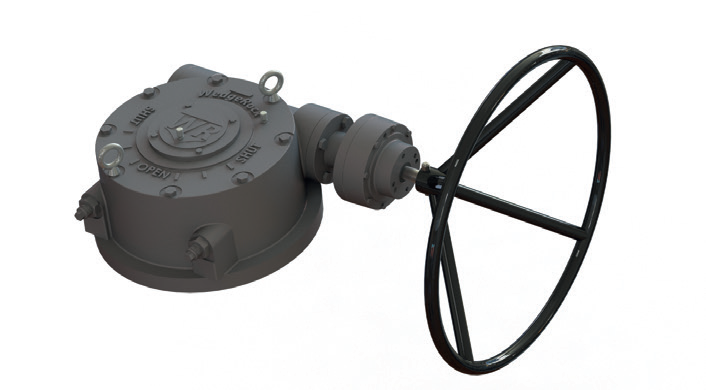
How Valve Operation is Impacted
With thousands of gas-powered actuators currently operating in the field, valve operation in the gas industry can be a major source of greenhouse gas emissions. Until recently, there were few viable alternatives available to meet performance requirements with the existing standard pipeline infrastructure. Historically, pipeline valves are operated using manual standard efficiency gear operators, remote controlled actuators, or automatic controlled actuators as determined by the application, valve torque, available operating media, and preference of end users.
In the case of larger diameter ball valves, even when these valves are operated infrequently, ‘convenience actuators’ are often installed for the health and safety of personnel. Convenience actuators are installed at substantial installation cost and maintenance. Driven by ‘human factor specifications’, this approach is taken to keep operations personnel from turning handwheels hundreds of rotations to open or close a valve, as is the case with standard efficiency gear operators. Convenience actuators are often low-pressure pneumatic (with regulators and relief valves), gas/hydraulic oil (also referred to as gas over oil), and direct gas actuators.
Unless instrument air is available in the case of low-pressure pneumatic actuators, the previously listed actuators require the use of natural gas from the pipeline to operate. During the operation of pipeline-gas-assisted actuators, natural gas exhausts into the atmosphere. While once considered acceptable, this methane venting is now considered fugitive emissions of greenhouse gases.
Quantitative and verifiable reduction of greenhouse gases is a prime environmental initiative in corporate ESG sustainability movements, and is rapidly gaining clarity and traction. This new focus is driving the design of new solutions using high-performance manual and electric alternatives gas-powered valve actuators. These next generation actuator packages are key to achieving aggressive and responsible ESG goals by reducing Scope 1 and Scope 2 greenhouse gas emissions.
Innovative Technologies
New products on the market such as high-efficiency worm, planetary, and spring return gears are finding a place in energy and industrial applications. A high-efficiency gear is loosely classified as any gear that is greater than 50% efficient. Standard-efficiency worm gears, most prominent in valve actuation, are typically 35% or less efficient by design, as this makes the gear set inherently self-locking, meaning torque driven from the valve stem through the output of the gear will be transmitted through the geartrain to the input (back driven). To overcome back driving and non-self-locking geartrains, an anti-back drive device must be employed in many applications to make these advanced actuators suitable and compliant. With the proper design, the use of high-efficiency gears provides valve actuation that can reduce power consumption, or work, by more than 300% in many applications, while eliminating the venting of greenhouse gases.
High-efficiency worm and planetary gears can significantly reduce the work required to operate valves over standard-efficiency worm gears. The benefit for the customer is easier manual operation compared to that of a standard efficiency gear. An additional benefit is decreased operation time in manually intensive operations such as pig launching and receiving.
High-efficiency gears can also be coupled with electric actuators to reduce operating times over conventional gears and power consumption by as much as 70%; the cleanest energy is that which is not consumed. The use of high-efficiency gears, especially planetary gears, are being used to significantly reduce power consumption while still meeting performance requirements; a sample calculation of the power consumption for a standard-efficiency worm gear compared to a high-efficiency planetary gear utilizing 16”, 20”, and 24” 900 ANSI valves is shown in Figure 2. The same electric actuator was used in all cases to illustrate the differences.
Figure 3 shows power consumption per cycle, over 10 years, and a 30- year period. As one can see from these calculations, power consumption is often reduced by more than 50%. This reduced power consumption of this sample project results in a lower carbon footprint if conventional power generated using fossil fuel is required. This is shown in Figure 4.
Not only does high-efficiency planetary gear technology help reduce the scope 2 GHG emissions compared to a standard efficiency worm gear, but, in many cases, the reduced power consumption allows for the use of a DC motor in conjunction with a renewable energy source such as a solar panel, and an uninterrupted power supply. This enables the creation of an ‘off the grid’ solution. This can be especially beneficial in remote areas where a zero-emission solution can be provided, eliminating any scope 1 and 2 emissions, while dramatically reducing the infrastructure cost of bringing power to those remote areas.
Another new technology that is gaining traction is the development of mechanical spring-return or failsafe gears. Spring-return gears can be used in a multitude of configurations to fulfill different operating conditions that historically required the use of hydraulic fluid and/or pipeline power gas. These engineered gears can be used in manual applications, manual-reset automatic control applications, manual-reset remote control applications, and when coupled with a motor operator, spring-return gears can be used for remote fail-safe ESD applications. Current spring-return gears out in the market are built using a high-efficiency planetary gear platform.
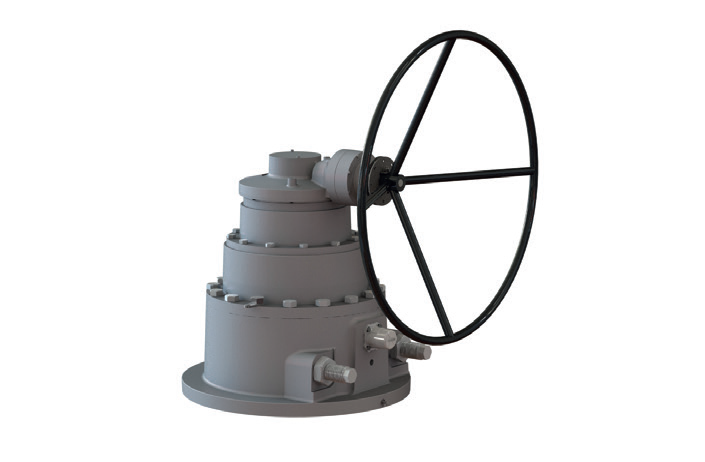
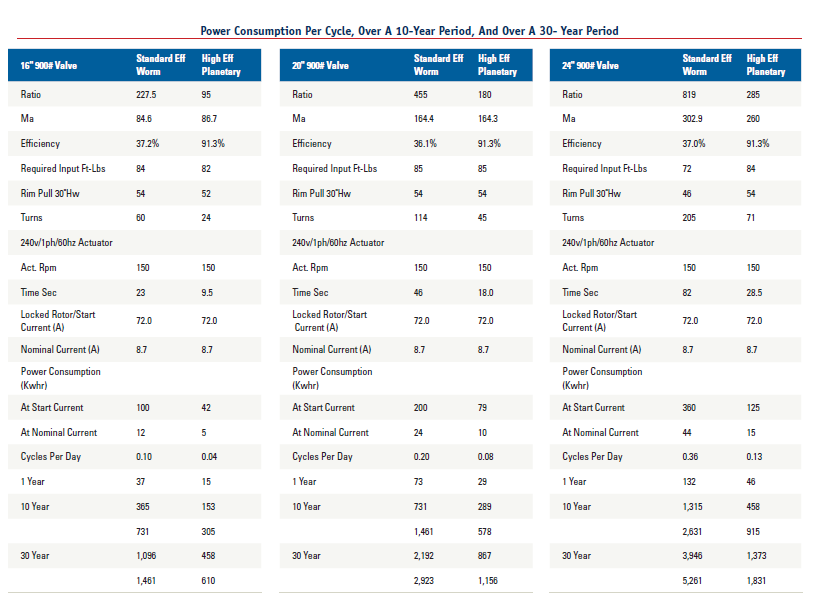
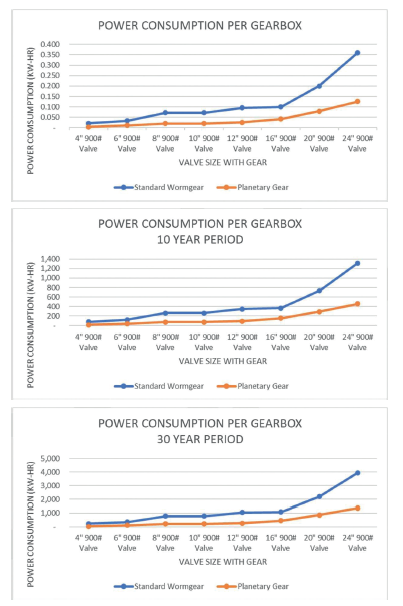
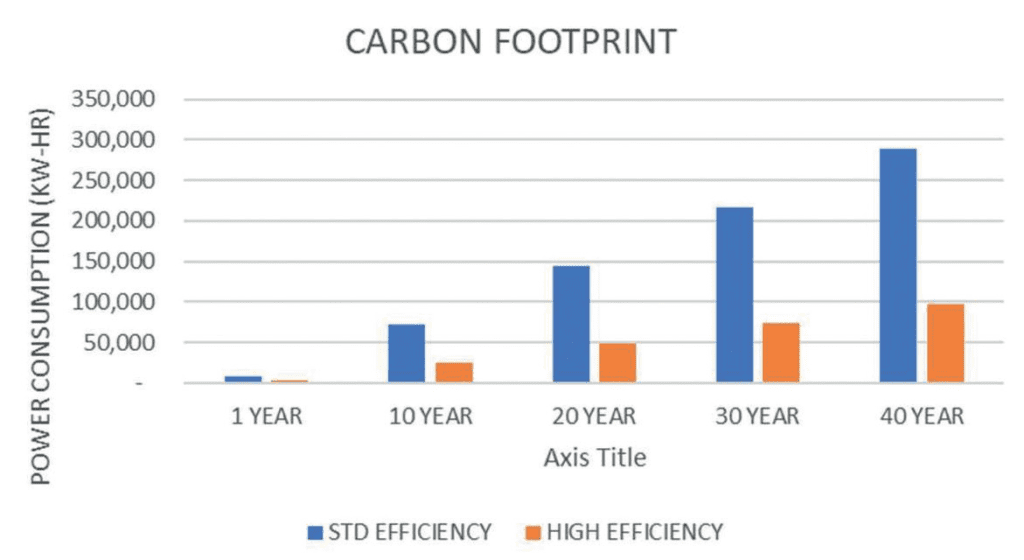
Spring-return gears can be operated manually using a lever and spring combination in one direction and the handwheel for the other. This is an emission-free solution to a convenience gas-over-oil actuator that uses the lever operated solenoid valve to open and close the valve or a self-contained hydraulic spring-return actuator. The operator would use the lever to stroke the valve in the ‘fail direction’ by manually actuating the trigger release mechanism that holds the spring. This set-up would require the operator to stroke the valve back to its ‘ready’ position using the handwheel. The benefit to the employee operating the valve in a manual fail-safe application is reduced operation time and workload of the planetary gear to compress the spring versus a standard gear or hydraulic pump. The benefit for the organization is less physical work and stress for the employee compared to a commercial gear while at the same time reducing the organizations methane emissions to zero for each valve stroke.
Spring-return gears can be used as manual reset, stand-alone emergency shutdown devices. These can be designed to operate utilizing line pressure from a high or low-pressure pilot or pressure switch in an automatic control strategy, or by receiving an electric signal from the operators control room in a remote-control strategy. In either of these configurations, the gear would be set up to go to a ‘fail position’ when the signal was received, the spring would be released allowing the valve to travel to its fail position. The valve would again need to be manually reset to the ‘ready’ position by operating the gear using the handwheel. This allows for quick operation in the case of an upset condition while keeping an operator in the control room from resetting a valve to its ready position without someone first going to the site to identify what caused the upset condition, a common industry application.
Spring-return gears can also be coupled with an electric actuator to provide an all- electric, mechanical fail-safe actuator. Since no power gas is required for this type of set up, valve operation is inherently emission free. Spring return gears are independent of the motor operator and therefore can be used with almost any multi-turn electric actuator manufacturer, allowing the end user to maintain conformity of products in their facility or pipeline, helping with spare part reduction and operator training/qualification.
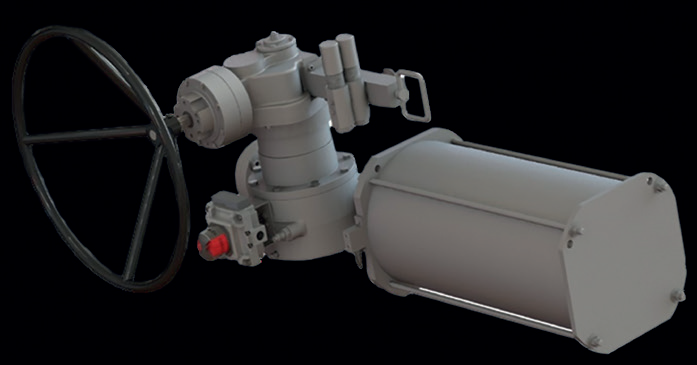
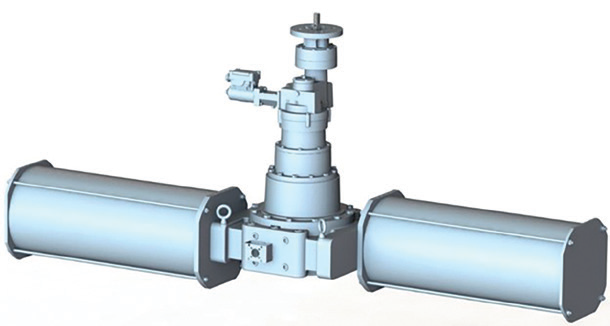
Conclusion
In an electric fail-safe application, not only does the customer get the benefit of an emission-free mechanical fail-safe device, but they also get the benefit of reduced power consumption, reduced operating times, and reduced infrastructure costs. By using the mechanical advantage of the planetary gear, the output torque required by the actuator is reduced allowing for a smaller motor that utilizes less power. In short, electromechanical/manual-mechanical alternatives to gas-powered actuators can help achieve environmental objectives, manage longer-term asset costs, and provide operational safety in the following ways:
- Eliminate exhaust emissions,
- Reduce leak paths of tubing and fittings,
- Eliminate valve creep in ESD valves due to temperature change and piston leak,
- Reduce maintenance over the life of the asset,
- Reduce the amount of work required to manually open or close a valve,
- Reduce power consumption of electric actuators, and
- Assist in meeting performance requirements such as speed of operation.
One has a direct and vital role to play in delivering a shared energy future that is more suitable, just, and ultimately sustainable. This requires continued collaboration with stakeholders, challenging the status quo, and pushing the boundaries of innovative thinking by providing change in society.




